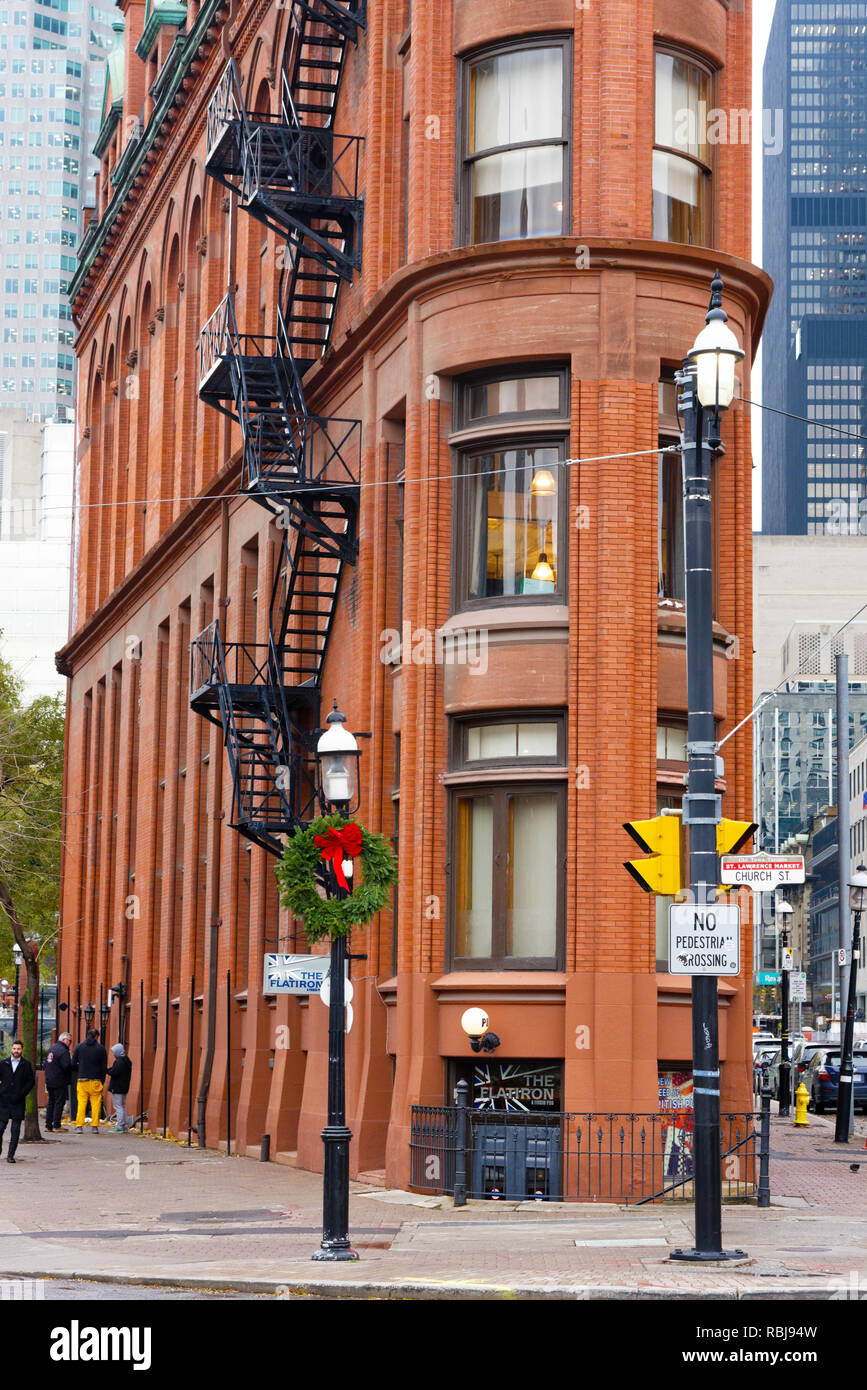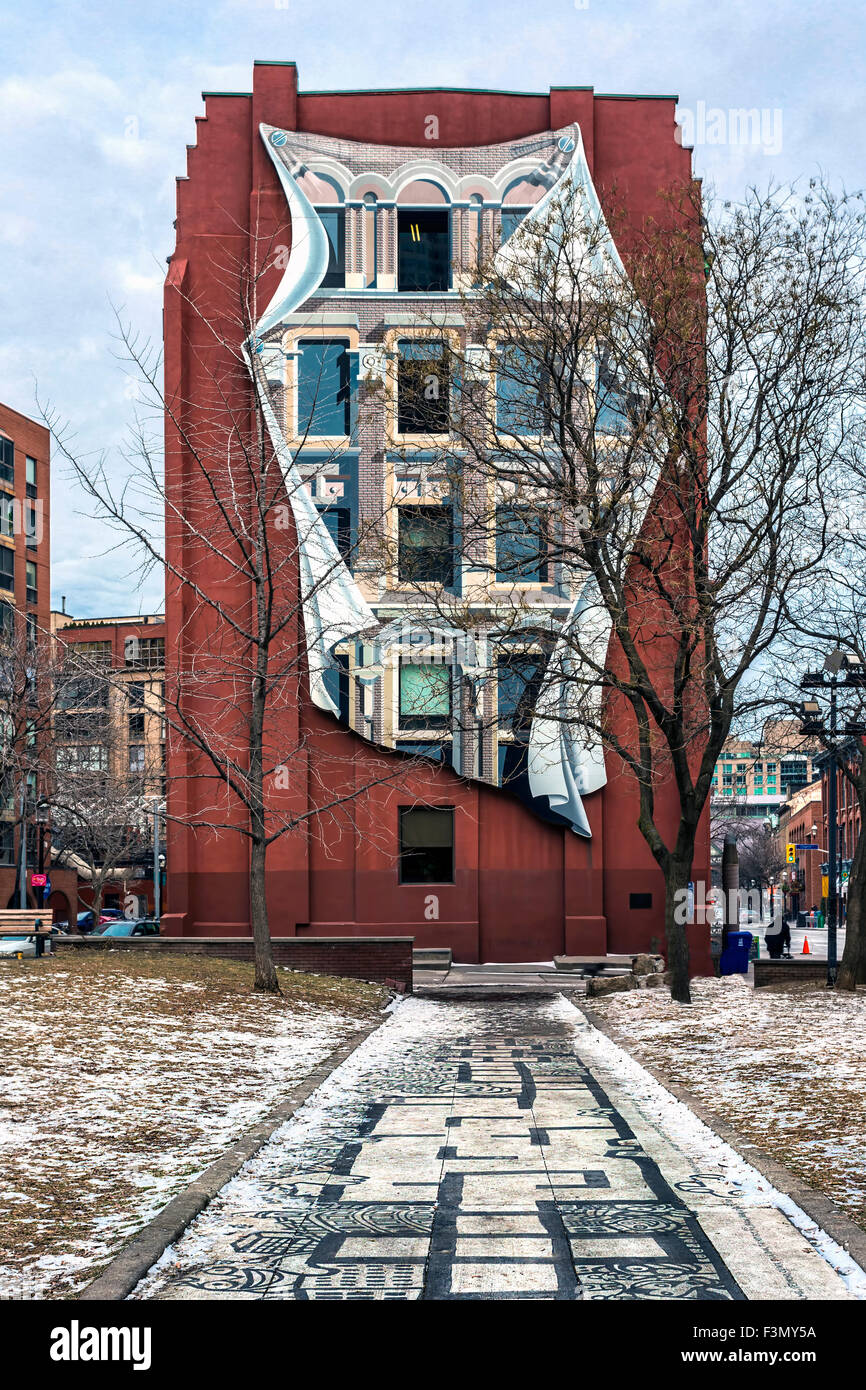Discover Gooderham Building ON: Complete Directions, Activities, and What It Costs.: Seasonal Weather and Close-by Spots Can Enhance Your Trip.}
Discover Gooderham Building ON: Complete Directions, Activities, and What It Costs.: Seasonal Weather and Close-by Spots Can Enhance Your Trip.}
Blog Article
Experience the Special Beauty of the Gooderham Building in the Heart of Toronto
The Gooderham Building stands as a testimony to Toronto's building evolution, exciting visitors with its distinctive wedge shape and historic value given that its conclusion in 1892. This landmark, characterized by its striking red-brick façade and copper-clad roofing, stands for an one-of-a-kind blend of Romanesque and Gothic Rebirth designs. Positioned among lively locations such as St. Lawrence Market and the Distillery District, the building not only enriches the cityscape but likewise welcomes expedition of its surroundings. The stories woven into its wall surfaces mean a deeper link to the city's heritage that beckons additionally exam.
Historic Importance
The Gooderham Structure, typically considered a building treasure, holds substantial historical worth in Toronto's metropolitan landscape. Built in 1892, this iconic framework was originally constructed as a storage facility for the Gooderham and Worts Distillery, one of copyright's biggest distilleries during the 19th century. The structure's distinct wedge form was required by the irregular story of land it occupies, signifying the flexible nature of metropolitan development throughout a period of fast industrialization.
As one of minority making it through structures from Toronto's early commercial age, the Gooderham Structure offers as a tangible link to the city's rich background. Its construction marked the change of Toronto from a modest community to a growing metropolitan area. Throughout the years, the structure has transitioned from its initial purpose to a center for various services, showing the evolving economic landscape of the location.
Designated a heritage property in 1975, the Gooderham Building is acknowledged for its social significance and stands as a long-lasting reminder of Toronto's architectural heritage. Its continued preservation is crucial for future generations, ensuring that the tales of the past continue to be an important component of the city's identification.
Architectural Attributes
Identified for its distinctive building design, the Gooderham Building includes a mix of Romanesque and Gothic Revival aspects that add to its famous appearance. Finished in 1892, this historic habitation showcases a special triangular footprint, a result of its location at the crossway of Front and Wellington Streets. Its red-brick frontage is embellished with intricately in-depth stonework, consisting of ornate corbelled braces and ornamental arcs, which enhance its aesthetic allure.

The Gooderham Building is not simply a building gem; it is a testament to the craftsmanship of the age, blending functionality with visual poise. This remarkable structure stands as a substantial depiction of Toronto's building heritage, attracting both citizens and tourists alike.

Surrounding Tourist Attractions
While exploring the Gooderham Structure, site visitors will discover themselves in close distance to a range of tourist attractions that enhance the cultural experience of the location. One noteworthy destination is St. Lawrence Market, renowned for its varied cooking offerings and dynamic atmosphere, making it an excellent place for food lovers. Simply a brief leave, the renowned Flatiron Structure, adjacent to the Gooderham Structure, exemplifies Toronto's building background and offers an excellent photo ops.
Additionally, the neighboring Distillery District is a must-visit, showcasing a collection of Victorian industrial buildings exchanged a dynamic arts and home entertainment hub. Site visitors can delight in galleries, stores, and cafes that reflect the location's rich heritage. For those interested in background, the Toronto Town Hall and Nathan Phillips Square offer appealing public spaces and occasions throughout the year.
Around, the course, Toronto's considerable underground pedestrian sidewalk, connects to countless shops and solutions, making it very easy for visitors to discover the city additionally (Gooderham Building activities). These surrounding tourist attractions not only enhance the experience of the Gooderham Building yet also supply a comprehensive look right into Toronto's dynamic cultural tapestry
Visiting Tips
For a rewarding experience when visiting the Gooderham Building, preparing ahead is necessary. First, consider the best time to go to; mornings or weekdays commonly supply a quieter atmosphere, permitting much better photos and a more leisurely expedition of this architectural gem.
Research study the building's background to enhance your gratitude of its distinct style and importance. Joining a directed tour can supply extensive insights and narratives that self-guided check outs might ignore.
Access is an additional essential aspect. The Gooderham Building is located at the intersection of Front and Wellington Streets, making it quickly reachable through public transport. If you plan to drive, be prepared for limited vehicle parking alternatives in the area.
In addition, wear comfy shoes. The surrounding area flaunts numerous pedestrian-friendly streets, ideal for strolling and finding nearby coffee shops and shops (Gooderham Building activities). After your see, take into consideration delighting in a dish at one of the local restaurants, a lot of which provide outside seating with views of the building
Last but not least, remember to value the structure and its environments, as it is a legendary piece of Toronto's heritage. Your thoughtful method will certainly improve your total experience at this historic website.
Cultural Effect
The Gooderham Building, often described as the Flatiron Structure, has become an icon of Toronto's architectural identification and social heritage. Built in 1892, its distinctive triangular shape and red-brick façade stick out amidst the city's skyline, representing the abundant history of urban development in Toronto. The building's layout mirrors the growing financial positive outlook of the late 19th century and functions as a testimony to the craftsmanship of that age.
Past its building value, the Gooderham Building has likewise contributed in creative expression and community engagement. It has actually been featured in different films, tv shows, anonymous and artworks, even more embedding it in the cultural consciousness of both homeowners and site visitors. The structure's location in the St. Lawrence Market location boosts its role as a meeting place, fostering regional culture through neighboring dining establishments, shops, and markets, which commemorate Toronto's varied heritage.
Furthermore, the Gooderham Building functions as a pointer of the importance of protecting historic style in city setups, inspiring future generations to welcome and protect their social spots. Its existence remains to stimulate a sense of pride and identity among Torontonians, making it a valued icon of the city.

Conclusion
The Gooderham Building stands as a testament to Toronto's architectural heritage and historical significance. Inevitably, the Gooderham Structure exhibits the enduring beauty of Toronto, highlighting the relevance of maintaining such landmarks for future generations to appreciate and take pleasure in.
Please visit one of our local supporters - Gamerama And The Repair Store - Toronto Iphone Repair Shop
Report this page